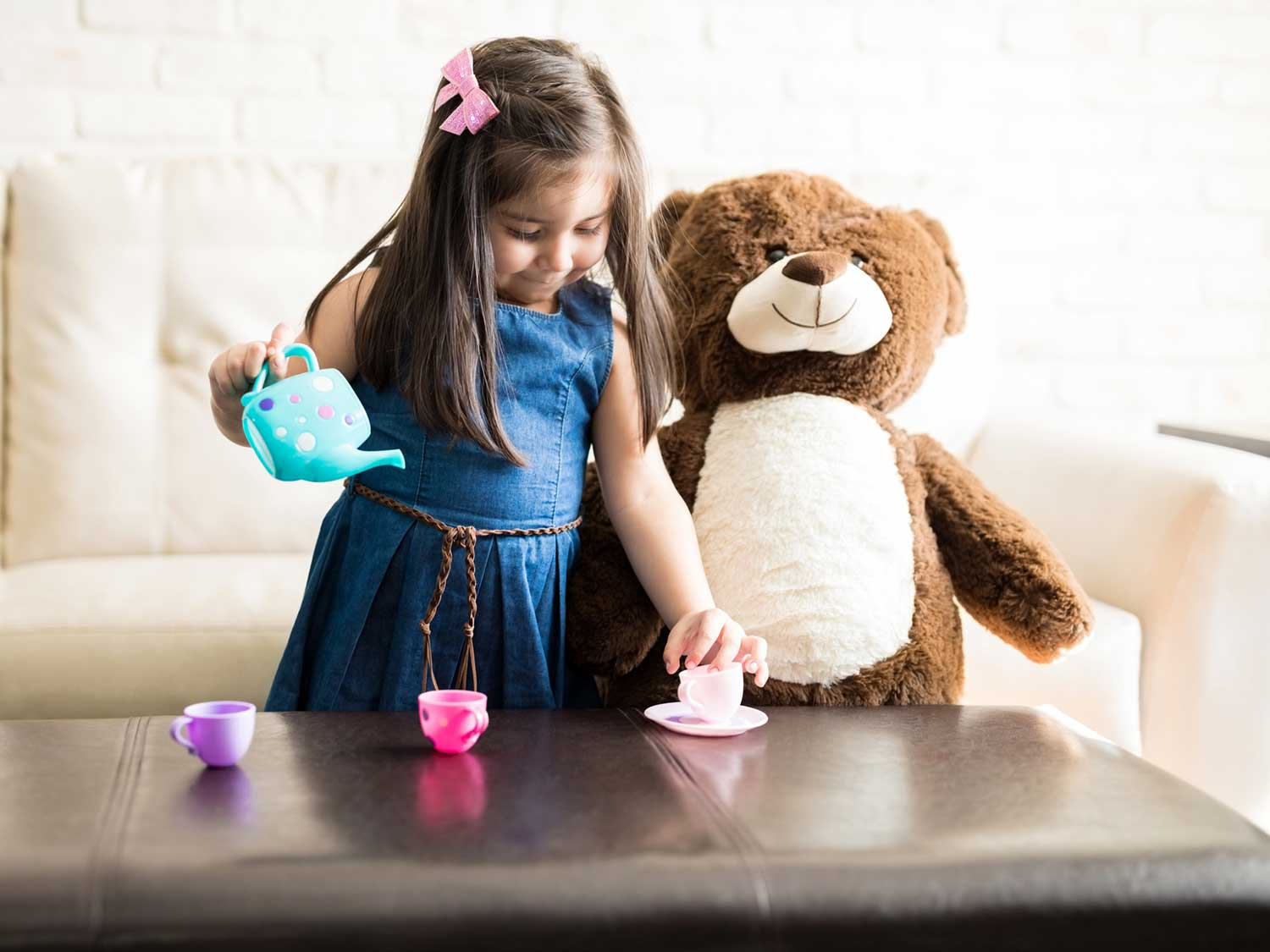All of a sudden, you find there is a new member of your household. No, you didn't get a new puppy. You're not having an overnight guest or hosting a slumber party. In fact, you won't even see this addition to your family. Say hello to your child's imaginary friend!
Why Kids Have Fantasy Friends
Pretend friends are quite customary for children between the ages of 2 and 5 1/2, when the line between reality and fantasy can be a bit blurry. Although you may feel silly putting out an extra place-setting at the dinner table, imaginary friends are a normal part of your child's development — and they can serve an important purpose. You might think of your child's invisible pal as a manifestation of the perfect playmate: a friend who never yells or disagrees, and always listens. If you are still a little concerned, consider this: an imaginary buddy offers an indication of your child's creativity and an advanced grasp on language skills.
How to Respond
While your child's imaginary friend is still hanging around, how should you react? Wait and see if your child extends an invitation for you to join the pretend play. Sometimes, he would rather keep his special companion to himself, which is fine — there is no need to intrude on his fantasy world. In other cases, your child might be quite enthusiastic about sharing her imaginary comrade, but you might not feel comfortable interacting with the “friend,” which is also fine. Make it clear that you would rather talk to your child than her imaginary playmate.
Dos and Don'ts:
- Do realize that imaginary friends are quite real to your child. Forcing him to unnecessarily admit his buddy exists only in his head might cause some avoidable tears.
- Do listen to your child's conversations with her pretend pal, if she is within hearing distance. Although you shouldn't intrude on her quiet time, she could be voicing fears or feelings you may want to address when she isn't engaged in pretend play.
- Do encourage other forms of creative play. For example, you might give your child a large, empty appliance box that could be used as a house or fort. Be sure he has plenty of opportunity to exercise his imagination in other ways, such as drawing or sculpting with clay.
- Don't allow your child to place blame on her imaginary friend. This would be an appropriate occasion to talk about how an imaginary friend is make-believe and that your child is responsible for her actions.
- Don't ignore what your child says about his imaginary friend. If your child announces before a meal that his invisible dinner guest likes potatoes better than pasta, you might be gaining insight about your child's own preferences.
- Don't worry!

